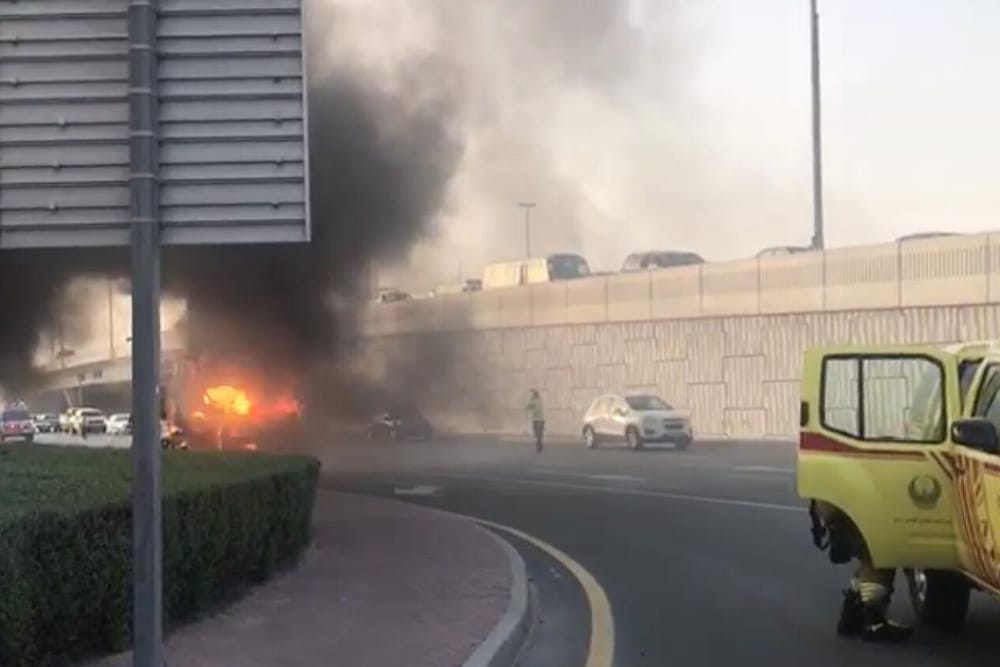As temperatures soar past 50 degrees Celsius, social media is abuzz with incidents of vehicles bursting into flames.
These alarming events underscore the critical need for motorists to take proactive measures to safeguard their cars and bikes against the extreme heat. Fire and automobile experts emphasize the importance of understanding the risks and adopting preventive strategies to mitigate the likelihood of accidental combustion.
Sam Malins, Group CEO of Reaction Fire Suppression, identifies poor maintenance as the primary contributor to vehicle fires.
“Neglected engine compartments have a higher risk of catching fire,”
Malins said. He advises motorists to ensure their vehicles are serviced and checked before peak summer heat. Regular inspections and adherence to manufacturer recalls are essential preventive steps.
Essential Maintenance and Precautions
Motoring expert Sony Rajappan highlights the significance of routine maintenance.
“Motorists should regularly check water and oil levels, tightly close the fuel tank cap, and avoid smoking near a heated car,”
Rajappan advises. Additionally, turning off the engine during refueling and keeping a fire extinguisher and first aid kit in the vehicle are crucial safety measures.
Rajappan also notes that high temperatures can strain the engine, causing overheating and potential fires. He recommends installing an automatic fire suppression system, which detects and suppresses fires within seconds. This system is cost-effective and easy to maintain.
Monitoring for Signs of Trouble
Malins stresses the importance of vigilance in preventing vehicle fires. Motorists should watch for fluid leaks, cracked hoses, loose wiring, and unusual engine noises or exhaust smoke. Avoiding cigarette butts and being alert to any changes in vehicle performance can prevent fires caused by high-temperature exhaust and emission control system issues.
Responding to Vehicle Fires
In case of a fire, Malins advises staying calm and acting quickly.
“Pull over safely, evacuate everyone, turn off the ignition, and move at least 30 meters away. Alert emergency services immediately and use a fire extinguisher cautiously if the fire is small,”
he recommends. He also cautions against leaving flammable objects in the vehicle, especially in summer.
Insurance Coverage for Fire Damage
Comprehensive insurance typically covers fire damage due to extreme heat, according to Anas Mistareehi, CEO of eSanad. Policyholders should review their insurance terms to understand coverage limits, deductibles, and exclusions related to environmental events. In case of a fire, insurance companies may conduct investigations to determine the cause and validate claims.
Understanding and implementing these expert recommendations can significantly reduce the risk of vehicle fires during extreme heat, ensuring the safety of motorists and their vehicles.
News Source: Khaleej Times









